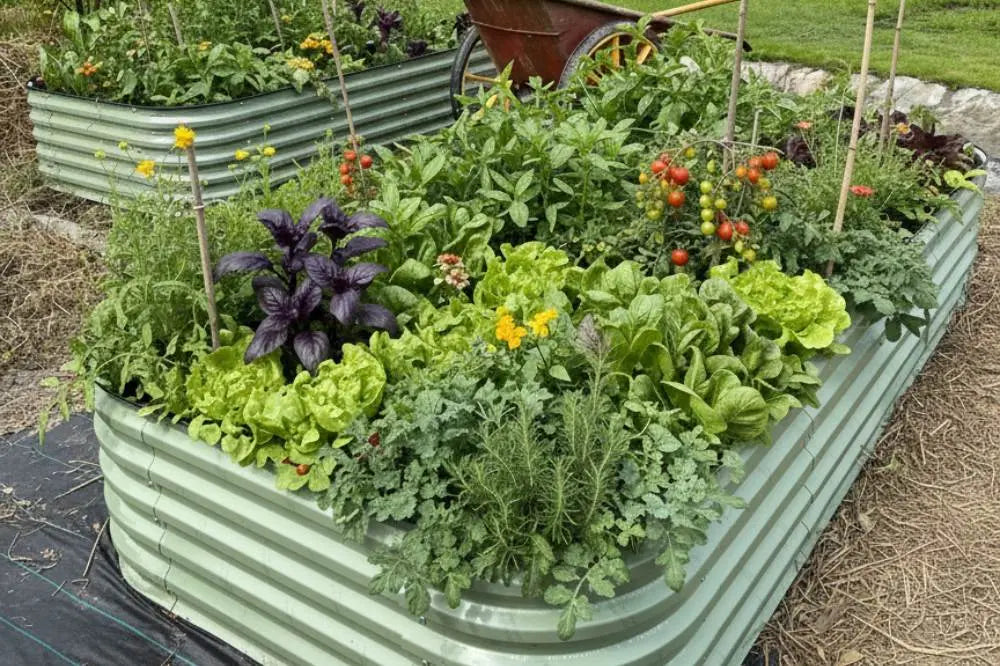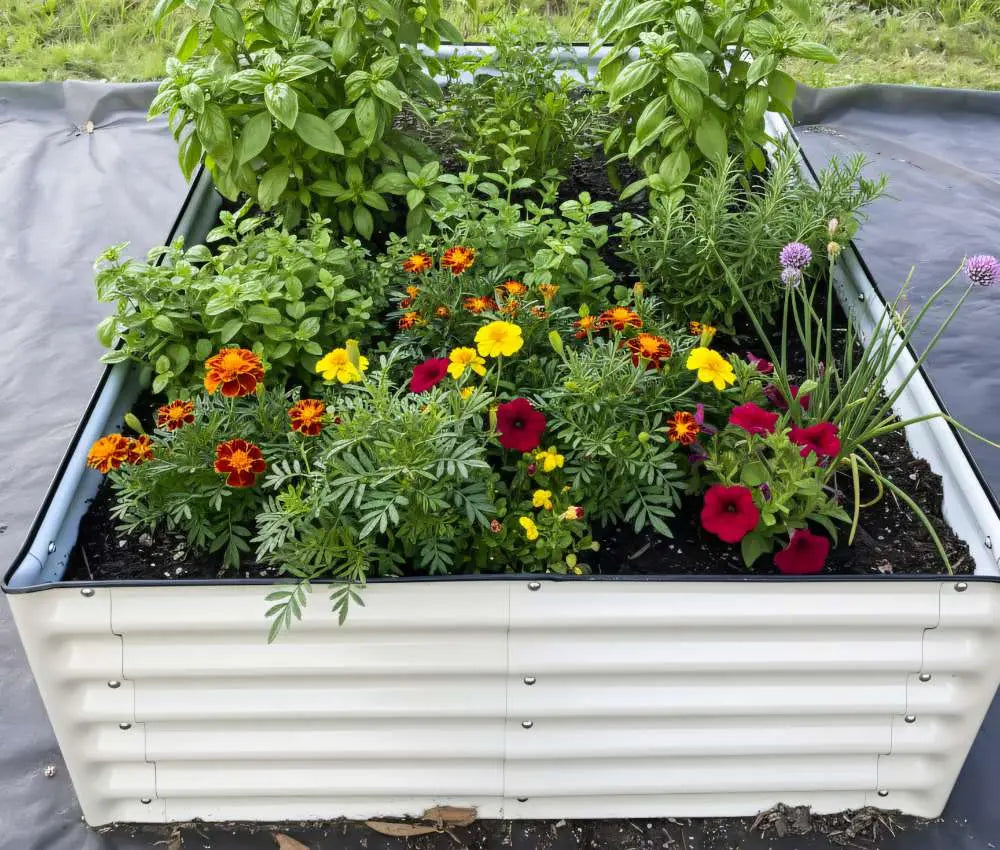Things You Need to Know when Growing Mushrooms at Home
By Louis Nguyen
Author bio: Louis Nguyen is an article writer. After a long time with the COVID-19 epidemic, he spent time researching and setting up his small garden.
Many people enjoy eating mushrooms or adding mushrooms to family meals to increase their intake of healthy nutrients. Mushrooms are a nutrient-dense, low-calorie source of fiber, protein, and antioxidants. Mushrooms are also rich in selenium, copper, thiamin, magnesium, phosphorus, etc.
However, many people do not know that mushrooms are easy to grow and grow fast. This article will guide you through choosing popular mushrooms to grow at home and how to grow and care for them. We will also include important notes to help you succeed in growing mushrooms at home.

Popular mushrooms that can be grown at home include:
Start the mushroom growing process by choosing 1 or 2 mushrooms you like best and that are easy to grow at home. Let's start with small tasks to get used to growing mushrooms.
White button mushrooms
White button mushrooms use mushrooms in many cuisines around the world. They are easy to grow and grow. White button mushrooms grow in shade, so you can grow them indoors. They also do not need too much nutrition or care.
Fill it with at least 6 inches of sterilized cow or horse manure. Check the bed temperature at 28 C or below, then proceed to sowing. Cover with a 2-inch layer of manure on the top and humidifying mist. For the next 1 to 2 weeks, continue to maintain the temperature at around 21 C. When the bed has a fine white film on the surface. Let's continue to add moist peat on top to cover the mycelium. Lower the temperature to 12 C and wait for the mushroom to grow.
Oyster mushrooms
The second name mentioned is "oyster mushroom. They will grow on almost any substrate, especially straw and chopped sawdust. Like white button mushrooms, oyster mushrooms do not need too much care.
After disinfecting the substrate, you need to maintain a humidity of 55% for sawdust, coir, and straw. When the mushroom growing medium achieves the right conditions, proceed to sowing. Always maintain a temperature between 20 C and 24 C, ventilated environment, and moist watering. And then wait for the fungus to grow.
Portobello mushrooms
Portobello mushrooms grow in warm climates. You can grow them indoors or outdoors. With a little compost, mulch, and the right temperature, you'll have plenty of portobello mushrooms all summer long.
Compost is a mixture of weeds, twigs, manure, and kitchen waste such as shredded vegetables and eggshells. Mushrooms grow best at a temperature not exceeding 20 C. After 2 weeks of sowing, add a 1-inch layer of compost. When the bed has a fine white film on the surface. Let's cover it with a layer of moist peat and humidifying mist.
Shiitake mushrooms
Growing Shiitake mushrooms will be a bit more difficult than the 3 types of mushrooms above. They will need longer incubation time and careful care. But, the trade-off between the great mushroom flavor and the process of waiting for the tiny mushrooms to grow is well worth a try.
Prepare oak or poplar wood logs that are 4-8 inches in diameter and 3-4 feet long. Fumigate the wood and drill 50 plugs per 6" diameter x 4' long log. Proceed to sow into the drilled hole. Immobilize it with a little beeswax or cheese wax. Place the log in a shaded area and keep it away from the ground. Always maintain an ideal humidity of around 90% and a temperature of about 20–24 C. After about 6 months, you can start harvesting.
Maitake mushrooms
Maitake mushrooms have a very special flavor. This fungus is parasitic on host trees, especially oak trees. Maitake mushrooms are grown indoors and outdoors. But growing indoors will provide favorable conditions for the fungus to grow better. You will need a little expertise to grow maitake mushrooms.
Prepare an oak log that is 3 feet long and 6 inches wide. Disinfect, then soak the wooden log in ice water for about 24 hours. Drill 30 holes in the log, about 1.5 inches deep. Proceed to sow the drilled hole and fix the hole with beeswax or cheese wax. Remove the wooden stick from the ground and water it to keep it moist. After 6 months, your log will start to sprout.

How to grow mushrooms at home
Mushrooms are grown from fungal spores combined with a substrate. Each type of mushroom will have a different suitable medium. To grow the simplest mushrooms, buy a specialized mushroom growing kit. It will include meow mushrooms, growing medium, and detailed instructions. Your job is to maintain the right humidity and environment for the fungus to grow.
If you want a little more challenge, you can buy meow mushrooms and start your mushroom-growing journey. This job is also quite simple; you need to find a suitable medium for each type of mushroom. Finally, take care and wait until the mushrooms grow.
a. Choosing the right mushroom growing area
Depending on the type of mushroom, you can choose an indoor or outdoor growing area. No matter where you choose to grow mushrooms, you should also choose the small growing area. Where you can control the temperature, humidity, and light suitable for each type of mushroom you grow.
b. Prepare tools and substrate to grow mushrooms
Start the mushroom growing process by preparing the necessary tools for planting. These include a growing tray (or bag), thermometer, mini water sprayer, purple litmus paper, cleaning solution, gloves, etc.
If you are going to grow mushrooms in your garden, Let's choose an area under trees or with lots of shade.Then set up a raised garden bed or a metal raised garden bed around the intended planting area. Some people choose to either dig a bed into their soil patch or lay the materials on a patch of ground. But, using raised beds will help you control the mushroom garden and limit other microorganisms that attack the mushrooms.
A few notes when preparing the substrate:
- Besides coir, straw, and sawdust, you can add bran, wheat husks, or manure to add nutrients to fungi that are easy to grow.
- Any substrate will need to disinfect to drop future fungal pathogens. The simplest is to soak the substrate in boiling water for 1 or 2 hours to disinfect. You also need to disinfect tools, utensils, and your hands with 70% isopropyl alcohol during the mushroom growing process.
- The substrate should have a pH that ranges from 5 to 7. If you don't have a pH meter, you can use red litmus paper to check.
c. Fungal diseases of mushrooms and their control
During the care of mushrooms, always watch for strange manifestations in the mushrooms. to help you detect disease in time and have an appropriate treatment plan. The 3 most common types of fungal diseases include
1. Dry bubbles diseases
Dry bubbles are a common disease in the mushroom growing process. If not controlled, the mushroom will dry out and die after only 2-3 weeks. The common manifestation of dry bubble disease is the appearance of many brown, often sunken spots on the mushroom cap. When detected, you need to immediately destroy the diseased mushrooms to avoid spreading them. Then proceed to clean the cage and lower the temperature to 14 C to destroy harmful agents.
2. Green Molds
The mycelium will turn dark green on the surface of the substrate. Later, patches of dark green mold will spread to look like moss on a tree trunk. When detecting signs of green mold infection. Let's isolate the area immediately from the remaining mushroom-growing areas. Mix a solution of hypochlorite, salt, lime, or plaster to spray on the infected area. Pay special attention to disinfecting every time you enter the infected area.
3. Wet Bubble
The appearance of small yellowish-brown liquid droplets. Then it turns dark brown, developing on the surface of undifferentiated tissue under humid conditions. Symptoms are often difficult to recognize; you will only know when the disease has spread into a large area.
d. Harvest the mushrooms
Finally, it's time for you to pick the sweet fruit. The mushrooms have grown large enough to serve the family meal. Put on gloves and start collecting mushrooms. The correct way to pick mushrooms is by placing your hand at the base of the mushrooms. Twisting and pulling the bottom of the stem in an anti-clockwise direction. Mushroom picking is in the morning so that the mushrooms are always fresh.


